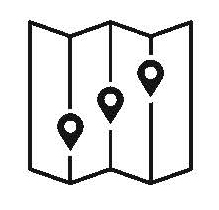Digital technology provides extremely powerful tools for social transformation. Government agencies use digital tools to make services more accessible and to increase transparency. Journalists and media organizations use them to better meet society’s critical information needs.1 Nonprofit and community-based organizations use digital technologies to advance their missions and better serve their communities. Social movements use them to help gather and mobilize supporters, raise funds, tell their own stories, hold powerful actors accountable for their actions, and change society.2
However, digital technologies are also used to harm people. Recently, there is greatly increased attention to the ways that technology design, development, and deployment often reproduce existing forms of inequality.3 There is a growing conversation about persistent gender and racial disparity in Silicon Valley.4 The use of “Big Data” across many areas of life has civil rights implications;5 for example, investigative reporting by ProPublica exposed algorithmic bias in predictive sentencing software, and highlighted racial inequality in the distribution of technological harms and benefits.6 Department of Homeland Security requests for software companies to help develop “good immigrant/bad immigrant” sorting software is feeding a debate about the ethical responsibilities of technology developers.7 Social media has become a terrain riddled with trolls, botnets, clickbait, and disinformation campaigns; some operate with political objectives, others for profit, and some just for the fun of it (or all of the above).
Conversations about the potential benefits and harms of technology are important. Too often, though, they do not include the voices of some of the most important actors: technology practitioners who work to advance social justice, the common good, and/or the public interest. Across the United States, thousands of software developers, designers, and project managers, as well as policy advocates, community organizers, city officials, researchers, and people in many other roles, work on technology projects. Every day, practitioners in government agencies, nonprofit organizations, colleges and universities, libraries, technology cooperatives, volunteer networks, and other kinds of organizations work to develop, deploy, and maintain digital technology in ways that will directly benefit their communities
#MoreThanCode aims to make the voices of these diverse practitioners heard. Our goals are to I. explore the current ecosystem; II. expand understanding of practitioner demographics; III. develop and share knowledge of practitioner experiences; IV. capture practitioner visions and values; and V. document stories of success and failure. We focus primarily on practitioners who work in the United States.
#MoreThanCode was produced through a participatory action research (PAR) process with the Technology for Social Justice Project (https://morethancode.cc). Our research questions, methods, and analysis of findings were all guided by a diverse group of practitioners, who we refer to as research partners. The project was coordinated by Research Action Design (RAD.cat) and the Open Technology Institute at New America (newamerica.org/oti) together with partners Upturn, Media Mobilizing Project, Coworker.org, Hack the Hood, May First/People Link, Palante Tech Cooperative, Vulpine Blue, and The Engine Room. NetGain, the Ford Foundation, Mozilla, Code For America, and OTI funded and advised the project.
We hope that our findings and recommendations will be useful to all those who want to use technology to make a more just and equitable world.
METHODS
#MoreThanCode is a Participatory Action Research (PAR) project. All research partner organizations worked together to develop the research questions, study design, data collection and analysis, conclusions, and recommendations. We interviewed 109 people and conducted 11 focus groups with 79 focus group participants. A total of 188 individuals participated in the study. We sought diverse participants in terms of gender identity, sexual orientation, race/ethnicity, educational background, sector (government, nonprofit, tech coop), urban/rural location, and other factors. Our study focused primarily on practitioners in the United States. Detailed study participant demographics can be found in the main body of the report. We also collected and analyzed secondary data, including: a database of 732 organizations and projects; IRS form 990 data for over 40,000 relevant nonprofits; over 14,500 job listings; and over 350 educational programs, networks, and associations. The Appendices include detailed methodological information, links to relevant secondary datasets, and links to interactive tools to further explore study data and findings.
Limitations Since there is no agreed upon definition of the field boundary, and no widely-accepted universe of participants in the field, it was not possible to conduct a true random selection of individuals or organizations. Therefore, as with any non-random sample, our findings should not be assumed to be representative of the entire field. We especially urge that the reader exercise caution when interpreting the demographics of our interviewees and focus group participants: we specifically sought to include women, People of Color, LGBTQI folks, and others who are not well represented across the broader technology sector. Therefore, the demographics of our study participants do not necessarily represent the demographics of any of the subfields we discuss in the report.
GOALS
The following goals, developed by all partners at our first convening, guided our research process:

I. ECOSYSTEM Define the field(s) and inventory the current ecosystem.

II. DEMOGRAPHICS Expand understanding of who participates in the field(s).

III. PRACTITIONER EXPERIENCES Establish a baseline understanding of practitioner experiences, how individuals came to this work (career path), barriers and opportunities practitioners (and their communities) face, and the support practitioners may need now.

IV. VISIONS & VALUES Capture practitioner visions of what is needed to transform and build the field(s) in ways that are inclusive and aligned with their values (social justice, social good, public interest, etc., as articulated by practitioners themselves), as well as how to mitigate threats.

V. STORIES OF SUCCESS AND FAILURE Document and distinguish models and approaches to carrying out technology for social justice (& etc.) work and projects on the ground. Identify what works, what doesn’t, and why.
